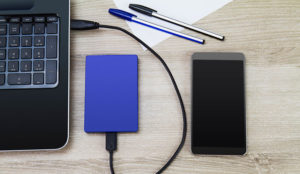
Finding itself at the center of a social media firestorm, Twitter on Friday acted quickly to placate users who were concerned about changes it made to its blocking functionality Thursday afternoon.
The way blocking worked prior to the change, was that Twitter would send a notification to a person blocked from another’s profile. The blocked individual couldn’t follow, retweet, favorite or include in lists the person who had imposed the block.
All that changed, at least for a little while, when Twitter effectively turned the block button into a mute function. That meant a blocked user was able to follow, retweet, favorite, and publicly share tweets of the user who had imposed the block. The blocked user did not receive a notification of the block. Rather, the notification feed of the person who had imposed it no longer included the retweets, favorites, or mentions of the blocked individual.
Fighting Anger
Twitter changed its blocking functionality with the intention of eliminating the angry reactions of people who were blocked. Blocking a user didn’t really make sense, Twitter reasoned, considering that a blocked user could simply log out and view the blocker’s public tweets anyway.
“Now when you block a user, they cannot tell that you’ve blocked them,” CEO Dick Costolo said in a tweet.
“It was a longstanding request from users of block. It is part of a suite of tools that we will continue to develop, along with the report button and others,” he explained.
Side Effects
“The official explanation they’ve given was that the way block used to work — and now works again — has this unfortunate side effect that someone who is blocked can tell that they are blocked,” Parker Higgins, an activist with the Electronic Frontier Foundation, told TechNewsWorld.
“If you were trying to fix that side effect, the way that they changed things would be effective. But it just seems like they didn’t consider the actual use cases that lots of people have for this function,” he said.
Users revolted against the changes, claiming that it would open the door for harassment and abuse. Protesters used the hashtag #RestoreTheBlock in the thousands to make Twitter aware of their feelings on the issue. One noted that harassers often retweet victims on their own accounts so that their friends can join in on attacks.
Lack of Consequences
“A lot of people, because they know that there’s no consequence to their action, other than possibly getting blocked, are actually quite foul,” Lon Safko, social media expert at Extreme Digital Marketing, told TechNewsWorld.
“They’re abusive, they use inappropriate language, they’re vindictive. Trying to stop those people has always been a problem. On a blog, you can simply delete their comments, and you can block them as spam and prevent them from ever commenting on your blog again, which is a quite reasonable way to do it,” he said.
After the outcry, Twitter executives reportedly rushed into a meeting to discuss the issue before deciding to reverse the changes.
Block Backtracking
“We have decided to revert the change after receiving feedback from many users — we never want to introduce features at the cost of users feeling less safe,” wrote Michael Sippey, Twitter’s vice president of product. “Any blocks you had previously instituted are still in effect.”
Still, blocking is not the ideal solution in Twitter’s view, as it often causes blocked users and their friends to retaliate. Twitter plans to look at other ways of protecting users from abuse and retaliation, he said.
“There’s no doubt that Twitter is having these kinds of troubles. There’s no penalizing, there’s no consequence,” Extreme Digital Marketing’s Safko pointed out.
“The problem in the past has been that Twitter has had to manually deal with these complaints one by one, and the payroll cost associated with that can be astronomical. They’re struggling right now trying to figure out how to clean up and assign consequence,” he continued.
“I can see where they were going with this,” Safko acknowledged, “but there’s nothing to stop [abusers] from sending inappropriate tweets to other people. The only consequence now is a possibility of doing a terminal block from Twitter, but those kinds of people will just get another Hotmail or Gmail account, sign up again, and continue where they left off.”
Sudden Turnaround
The fallout from the block button changes didn’t affect Twitter’s market position. Its stock price continued to climb, reaching a new high of US$58.26 on Friday. Many users were heartened to know that Twitter was listening to their concerns and taking them seriously, especially over such a sensitive issue as privacy.
“It’s encouraging to see, as an organization who fights for users’ rights in general, the company respond to users concerns — and that’s not something we always see by tech companies,” the EFF’s Higgins said.
Putting Users First
“People have different concerns, but too often the narrative we see is that companies have come up with something that’s good for their revenue model and made changes for that reason,” Higgins added.
“It’s refreshing to see companies acknowledge that revenue models aside, there’s real problems that users have — and making changes for that,” he said.
“Facebook has made some outrageous mistakes over the last five years, especially when it comes to privacy and ownership of the content,” Safko noted. “When [Twitter] made changes, they listened to their user base and responded appropriately. If every company listened as closely as Twitter just did to their user base and designed their products around what the customer asked for, that’s built-in success. I think they did a good job with that.”





















































